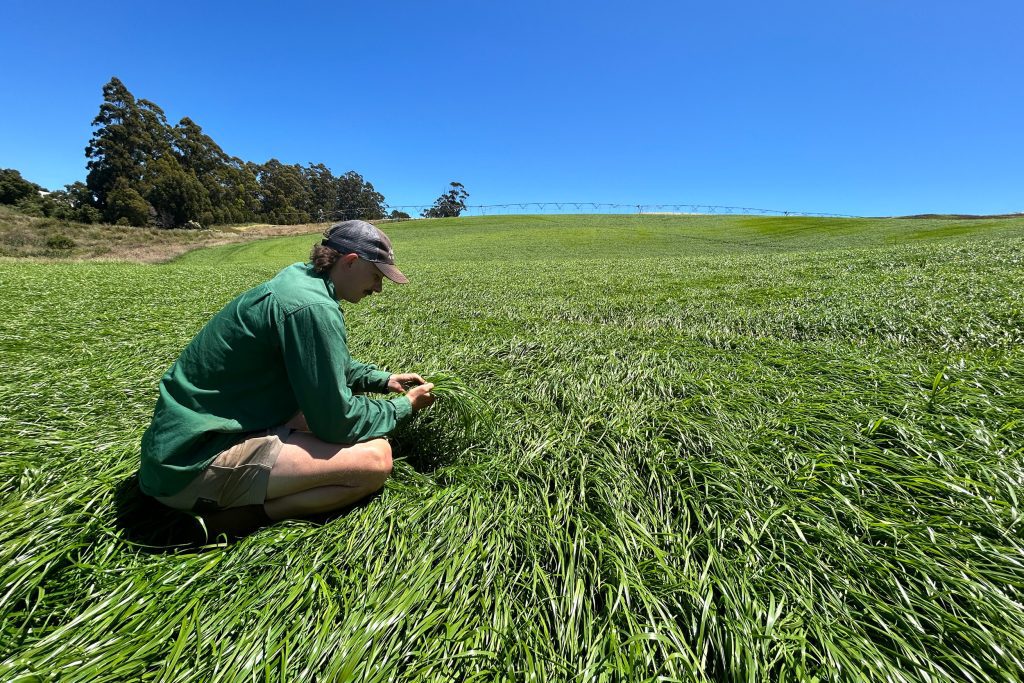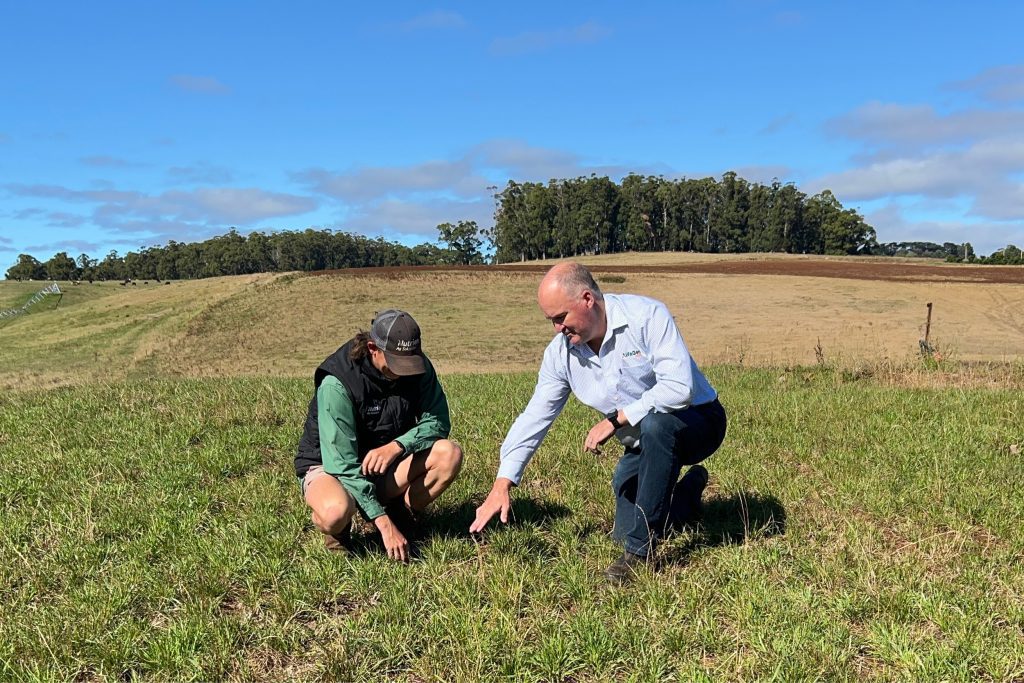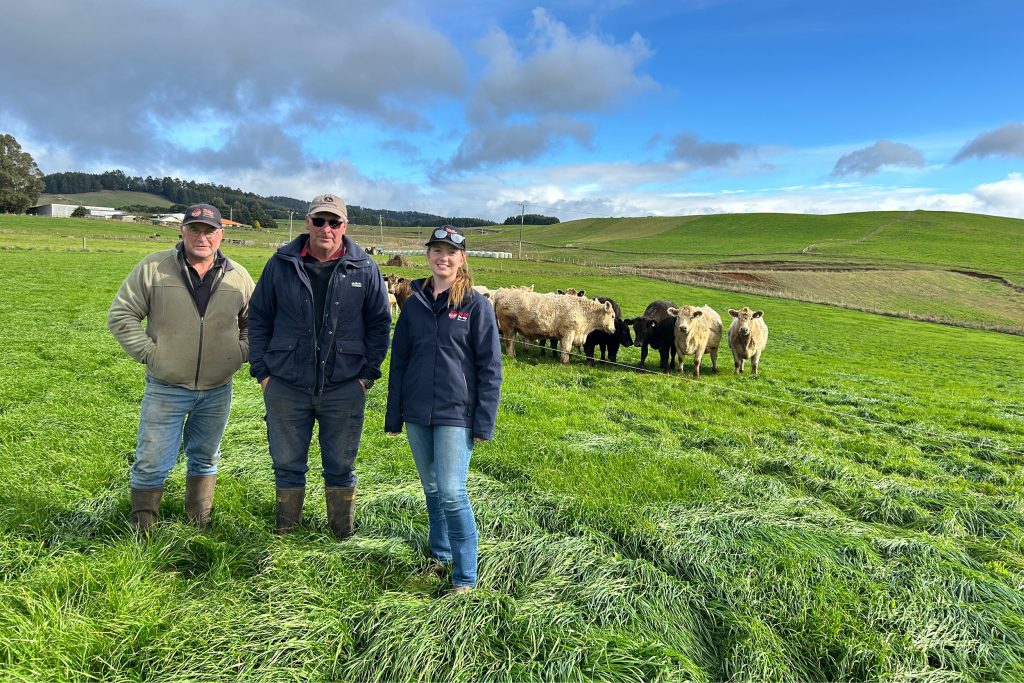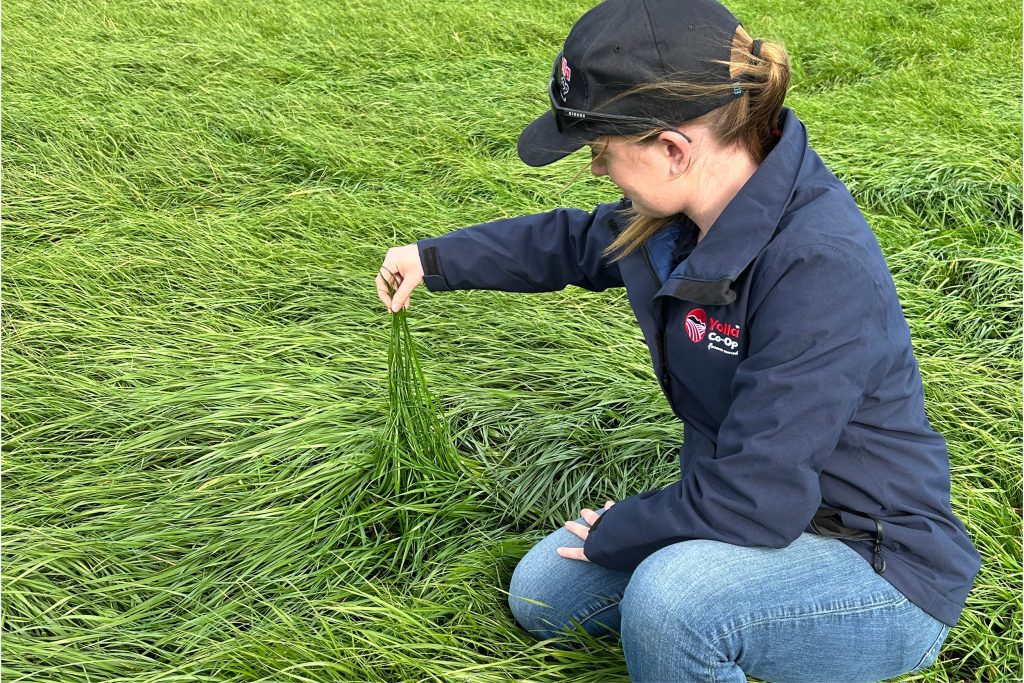From sowing to peak milk: Adam’s Maheno & Sorrento ryegrass stand delivers under pressure
September 23, 2025 Australia
In the hills of North West Tasmania, late spring sowing can feel like a gamble.
Dairy farmer Adam Waasdorp runs 170 cows and rotates paddocks between pasture, pyrethrum, and potatoes. In late 2024, he trialled two new ryegrass varieties from AlfaGen Seeds, Maheno, a tetraploid, and Sorrento, a diploid, sown into a key ex-pyrethrum block.
Despite warm conditions and limited irrigation, the result was a standout.

The Maheno/Sorrento paddock pre-graze, clean, even, and dense.
“I was amazed at how quickly the grass established. Other paddocks had already started to run to head while the Maheno/Sorrento paddock remained vegetative. It helped us get the cows back up to peak lactation again.”
— Adam Waasdorp, Dairy Farmer, NW Tasmania
By early March, the paddock had already delivered three grazings, while others on-farm were heading early and starting to lose feed quality.
Agronomist Alex Triffett from Nutrien Ag saw the difference firsthand.
“It was very clean, had excellent vigour, and delivered a lot of feed with very little irrigation.”
That combination of early feed, persistence, and low water use is what sets Maheno and Sorrento apart in spring-sown ryegrass systems.

Alex Triffett and David Squibb assess the paddock post graze.
And the paddock wasn’t done yet.
“We’re planning to take another grazing before it’s sprayed out for pyrethrum.”
Even in a rotation where the grass would be terminated early, the stand had more to give, and did it with minimal input.
Now, Adam’s looking to go again.
“We’re lining up seed for another paddock this season.”
It’s not just Adam seeing the difference. On the north-west coast, beef farmers Rodney and Darryl Saltmarsh also sowed Maheno and Sorrento after pasture grubs damaged one of their paddocks. They wanted a short-term option before resowing to perennial pasture and decided to try a new approach.

Rodney Saltmarsh (left, Darryl Saltmarsh (centre) and Jennah Horton from Yolla Co-Op (right).
“We sprayed off the old pasture with Roundup and wetter and then direct-drilled the Maheno and Sorrento, which is also a new practice for us. Based on the results so far, we will continue with this approach into other paddocks on the farm,”
— Daryl Saltmarsh, Beef Farmer, North West Tasmania
Jennah Horton, agronomist with Yolla Co-Op, is also surprised with the productivity of the pasture and will now work with Darryl and Rodney on their weed control program.
Rodney added:
“We got a cut of silage and two grazings over the first summer and autumn. Based on the seasonal conditions we have had, we are very pleased to have quality feed available, so we will definitely be sowing this again.”

Jennah Horton, agronomist with Yolla Co-Op, highlighting the length of the leaf blades and amount of feed available in the Maheno and Sorrento pasture.
Why it worked, and what to take away
Maheno and Sorrento are bred for exactly this kind of mixed-farming flexibility.
- Maheno tetraploid ryegrass: fast to establish, high palatability
- Sorrento diploid ryegrass: persistent, stress-tolerant, and slow to run to head
Together, they delivered dense feed, extended vegetative growth, and real animal performance, even in a short rotation.
From dairy to beef in NW Tasmania, these paddocks proved that spring-sown Italian ryegrass can still deliver outstanding results under pressure, especially when you match dormancy, variety type, and rotation goals.